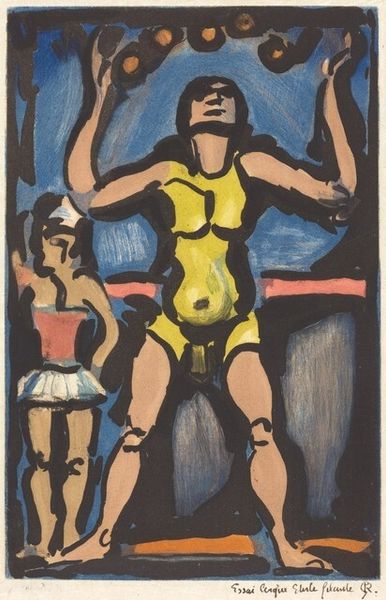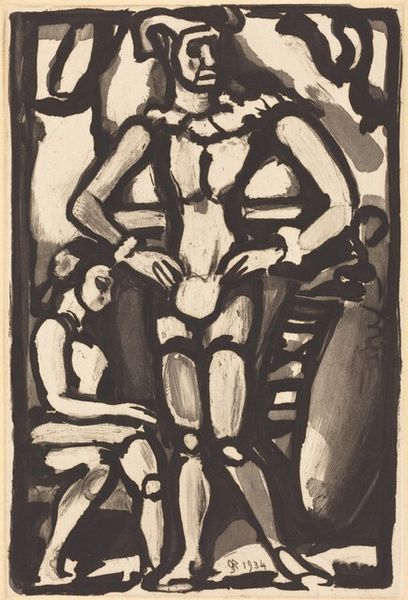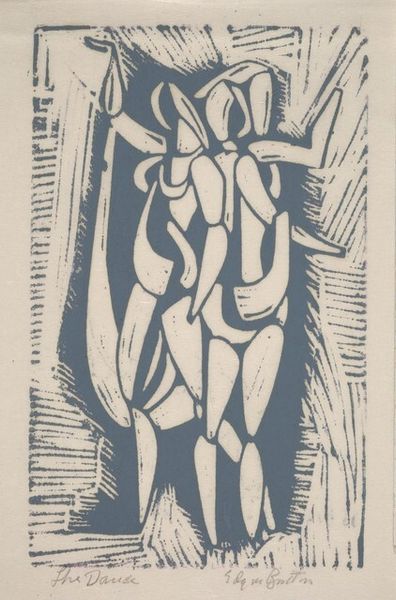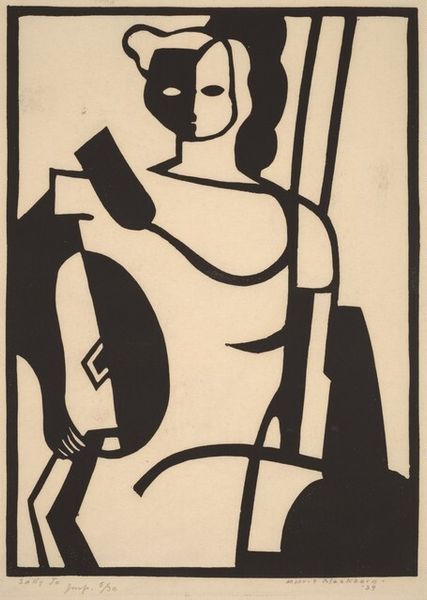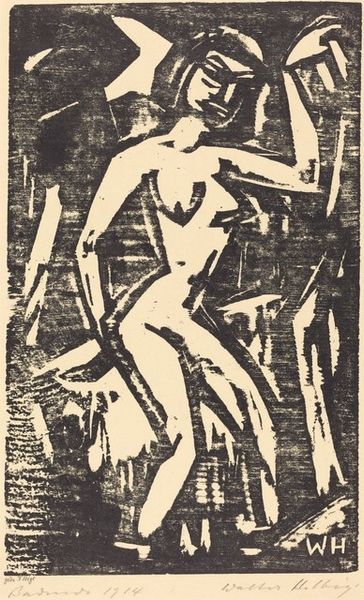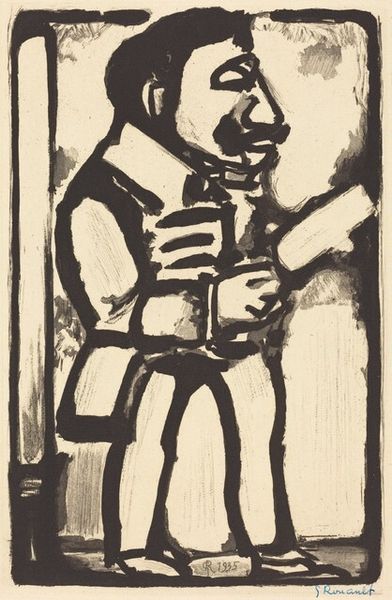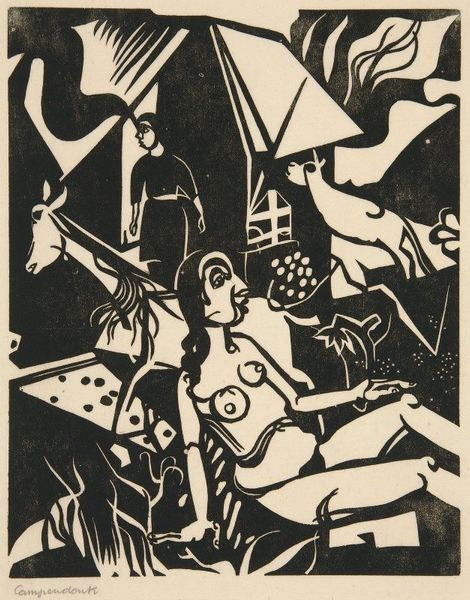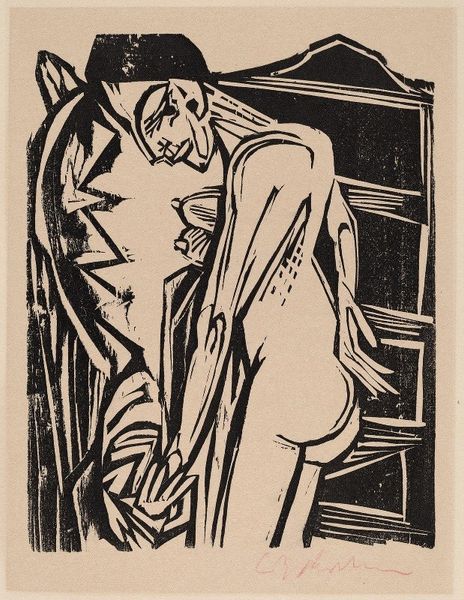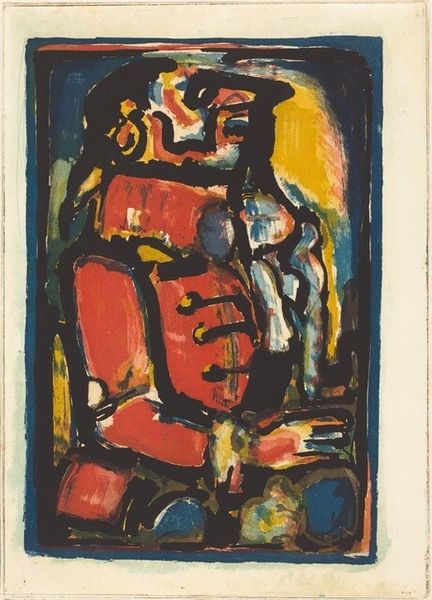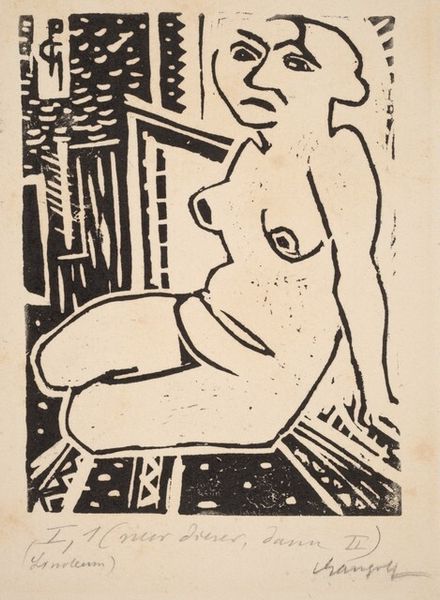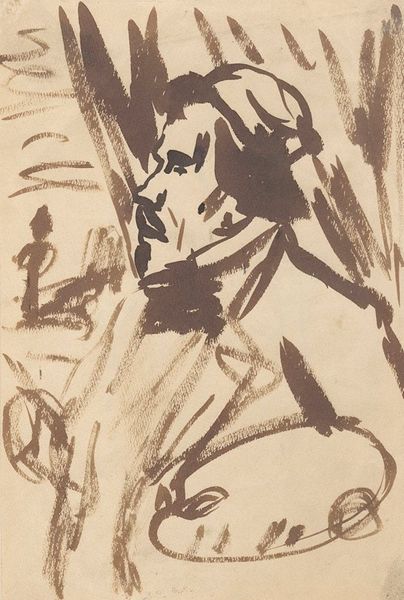
Copyright: National Gallery of Art: CC0 1.0
Curator: What a stark image. The black and white print has such a high contrast, lending it an almost oppressive feel. Editor: This is "Jongleur", possibly created in 1934 by Georges Rouault. Look closer, and you'll notice the stylistic debt to expressionism and his penchant for the caricatural. But for me, there's an intriguing intersection here between art and politics, where performance might embody something more sinister. Curator: Sinister? I see more of a sad clown trope. His downturned mouth and upward gaze speak volumes. And look at the girl, maybe a ballerina, slightly withdrawn, adding another layer of complexity to our reading. It also points toward the role of gender. Is it perhaps a critical statement on the exploitative dynamics within performance spaces? The subjugation of women by a powerful ringleader, let's say? Editor: I like the way you’re thinking. I’d say that by understanding the role of printmaking during Rouault’s lifetime—its ability to cheaply circulate dissident imagery, ideas—and within social commentary, perhaps the circus performer embodies societal dysfunction. Rouault was very religious; in that historical frame, does he function as some twisted preacher, his audience captivated by something hollow? The work’s institutional history certainly adds another layer; I can imagine it sparking discussions within politically charged art spaces during its time. Curator: I am intrigued. Thinking about performativity allows us to analyze gender constructs as performance too. So while his physique occupies center stage, a body potentially enhanced, hers is diminutive, presented as secondary. We need to see them in dialogue with a changing landscape for women, don't we? The visual tension created highlights inequalities still so prevalent now. Editor: Exactly. By diving into art's broader socio-political footprint, and how venues shape its significance, we challenge traditional interpretations. The print reminds us that art's narrative transforms and changes across eras and cultural awareness. Curator: Yes, these historical and social factors push us to reconsider assumptions about artistry itself. I love it. Editor: Indeed. A powerful piece!
Comments
No comments
Be the first to comment and join the conversation on the ultimate creative platform.
